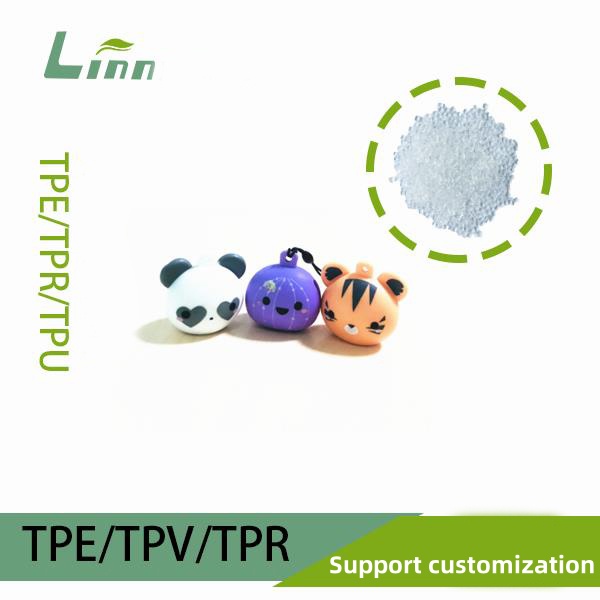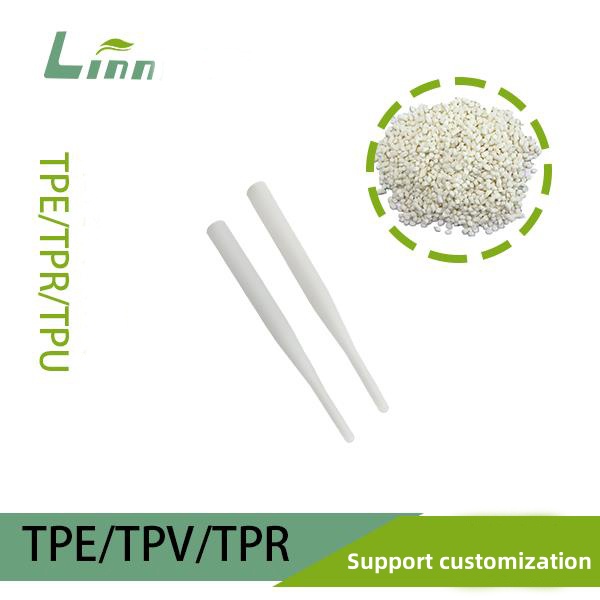As someone who’s spent over fifteen years in the plastics and elastomers industry, I’ve seen my fair share of material quirks. One issue that keeps coming up, especially with white thermoplastic elastomer (TPE), is its tendency to turn yellow over time. Whether it’s a phone case, a yoga mat, or a medical device, that unsightly yellowing can be frustrating for manufacturers and users alike. So, what causes this discoloration, and how can it be prevented? Let’s dive into the science behind it, drawing from my experience working with TPE formulations and troubleshooting for clients.

What Is TPE, and Why Is White TPE Prone to Yellowing?
Before we get into the nitty-gritty, let’s clarify what TPE is. Thermoplastic elastomers are a class of materials that blend the flexibility of rubber with the processability of plastics. They’re used in everything from soft-touch grips to automotive seals because they’re durable, versatile, and recyclable. White TPE, in particular, is popular for its clean, aesthetic appeal in products like consumer electronics or medical equipment.
Yellowing, however, is a common problem with white TPE. It’s not just a cosmetic issue—it can signal material degradation or formulation flaws. From my years in the field, I’ve learned that yellowing is often the result of chemical or environmental factors interacting with the material’s components. Let’s break down the main culprits.
Key Causes of Yellowing in White TPE
1. Oxidation and Thermal Degradation
TPE’s polymer base, often styrene-ethylene-butylene-styrene (SEBS) or styrene-butadiene-styrene (SBS), is susceptible to oxidation when exposed to heat, oxygen, or UV light. During manufacturing, high processing temperatures (like those in injection molding) can cause thermal oxidation, breaking down the polymer chains and forming chromophores—molecules that absorb light and create a yellow tint. I’ve seen this happen when TPE is processed at temperatures above 200°C for too long, especially with SBS-based TPEs, which are less thermally stable than SEBS.
2. UV Light Exposure
UV radiation is a major enemy of white TPE. When exposed to sunlight or artificial UV sources, the polymer structure can degrade, leading to yellowing. This is particularly true for outdoor products like garden hose grips or automotive trim. The UV light breaks down the polymer’s double bonds (especially in SBS-based TPEs), creating colored byproducts. In my work, I’ve noticed that SEBS-based TPEs, which are more UV-resistant due to their saturated structure, yellow less than SBS-based ones.
3. Additive Instability
White TPE gets its bright color from additives like titanium dioxide (TiO2), a common whitening agent. However, other additives—such as plasticizers, stabilizers, or flame retardants—can degrade over time, contributing to yellowing. For example, low-quality antioxidants or UV stabilizers may break down under heat or light, forming colored compounds. I once worked with a client whose TPE grips turned yellow because their supplier used a low-grade antioxidant that couldn’t withstand prolonged UV exposure.
4. Environmental Contamination
External factors like air pollutants, oils, or chemicals can also cause yellowing. For instance, nitrogen oxides (NOx) from car exhausts or industrial environments can react with TPE’s surface, creating a yellowish hue. Similarly, contact with human sweat, cosmetics, or cleaning agents can trigger discoloration. I recall a case where a batch of white TPE phone cases yellowed because they were stored in a warehouse with poor air quality, allowing pollutants to interact with the material.

5. Poor Material Formulation
Not all TPEs are created equal. Low-quality raw materials or improper blending can lead to yellowing. For example, using non-hydrogenated oils or subpar resins in the TPE mix can introduce impurities that oxidize over time. In my experience, manufacturers cutting corners on material quality often face yellowing issues sooner than those using premium, stabilized formulations.
Here’s a summary of the main causes of yellowing in white TPE:
|
Cause |
Why It Happens |
Impact on TPE |
Prevention |
|---|---|---|---|
|
Oxidation/Thermal Degradation |
Heat and oxygen break down polymers |
Creates yellow chromophores |
Use SEBS-based TPE, add antioxidants |
|
UV Light Exposure |
UV radiation degrades polymer bonds |
Forms colored byproducts |
Add UV stabilizers, use UV-resistant TPE |
|
Additive Instability |
Low-quality additives degrade |
Contributes to yellowing |
Use high-quality stabilizers, TiO2 |
|
Environmental Contamination |
Pollutants like NOx react with TPE |
Surface yellowing |
Store in clean environments, apply coatings |
Is Yellowing Just Cosmetic, or Does It Affect Performance?
Yellowing isn’t always just about looks. While it often starts as a surface issue, prolonged degradation can weaken the material’s mechanical properties, like flexibility or tensile strength. For example, in medical applications, yellowing might signal that the TPE is no longer meeting strict regulatory standards. In consumer goods, it can make products look cheap or worn out, hurting brand reputation. I’ve worked with companies that had to recall products because yellowing led to customer complaints, even when the material was still functional.
How to Prevent Yellowing in White TPE
Based on my experience, preventing yellowing starts with smart material selection and processing. Here’s how manufacturers and users can keep white TPE looking pristine.
For Manufacturers
Choose UV-Resistant TPE Grades: Opt for SEBS-based TPEs over SBS-based ones, as SEBS is more resistant to UV and thermal oxidation. Medical-grade or automotive-grade TPEs often have built-in stabilizers for better performance.
Use High-Quality Additives: Invest in premium titanium dioxide for consistent whiteness and UV stabilizers like hindered amine light stabilizers (HALS). These can significantly reduce yellowing under light exposure.
Add Antioxidants: Incorporate primary and secondary antioxidants to protect against thermal and oxidative degradation. I’ve seen formulations with a blend of phenolic and phosphite antioxidants perform exceptionally well.
Optimize Processing Conditions: Keep processing temperatures below 200°C and minimize residence time in the extruder or mold. This reduces thermal stress on the material. I once helped a client lower their molding temperature by 15°C, which cut yellowing complaints by half.
Apply Protective Coatings: For products exposed to harsh environments, consider a UV-resistant coating or film to shield the TPE surface.
For Consumers
Store Properly: Keep white TPE products away from direct sunlight or high heat. For example, store yoga mats in a shaded, cool place rather than a car trunk.
Clean Regularly: Wipe down TPE surfaces with mild soap and water to remove contaminants like sweat or oils. Avoid harsh chemicals, as they can accelerate degradation.
Use UV Protectants: For outdoor TPE products, apply a UV-protectant spray designed for plastics. This can slow down yellowing, though it’s not a permanent fix.
Ventilation: Store products in well-ventilated areas to minimize exposure to pollutants like NOx. I’ve found that simply moving TPE items to a cleaner storage space can make a big difference.
Real-World Examples of Yellowing Issues
In my career, I’ve tackled yellowing in various TPE applications. One memorable case involved a batch of white TPE phone cases that turned yellow within weeks of reaching customers. After investigating, we found the issue was a combination of low-quality TiO2 and excessive molding temperatures. Switching to a high-purity TiO2 and adjusting the processing parameters solved the problem, and the next batch stayed white for months.
Another time, I worked with a medical device manufacturer whose TPE tubing was yellowing in hospital settings. The culprit? UV exposure from fluorescent lights and poor-quality stabilizers. We reformulated the TPE with HALS and a better antioxidant package, ensuring the tubing met both aesthetic and regulatory standards.
These experiences taught me that yellowing is rarely caused by one factor alone—it’s often a mix of material, processing, and environmental issues. Addressing it requires a holistic approach.

Advances in TPE Technology to Combat Yellowing
The good news? The TPE industry is making strides to reduce yellowing. Next-generation TPEs are being developed with improved UV and thermal stability. For example, some manufacturers now offer pre-stabilized SEBS compounds that resist yellowing even under prolonged sunlight exposure. Nanotechnology is also playing a role—nano-scale TiO2 particles provide better whiteness and durability compared to traditional additives.
Sustainability is another focus. I’ve seen new TPE formulations that use bio-based oils and eco-friendly stabilizers, reducing both yellowing and environmental impact. These advancements are exciting, as they make white TPE more reliable for high-end applications.
Wrapping Up
Yellowing in white TPE can be a headache, but it’s a solvable problem. By understanding the causes—oxidation, UV exposure, additive instability, and environmental factors—you can take steps to prevent it. Whether you’re a manufacturer fine-tuning your formulation or a consumer caring for your TPE products, small changes can keep that bright white look intact. My years in the industry have shown me that with the right materials and techniques, TPE can stay both functional and visually appealing for years.




